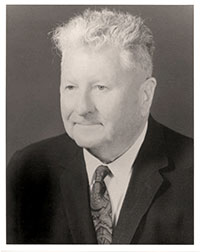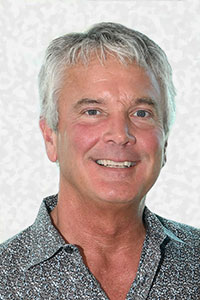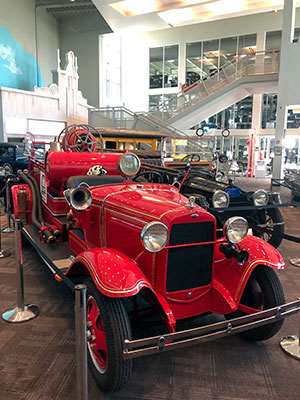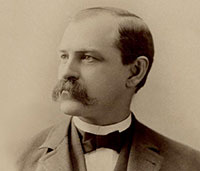Elliott Museum at 60

Founder created cultural center to showcase father’s inventions and a little bit of everything else
BY DONNA CRARY

Harmon Elliott knew a golden opportunity when he saw one. Back in the late 1950s, he wanted to create a special place in Stuart to celebrate his father, Sterling Elliott, a prolific inventor. His idea was to build a museum where he could display not only Sterling’s many inventions, but an impressive car collection and other rare artifacts of Americana in the hopes of bringing a cultural center to the Treasure Coast.
Elliott approached the members of the newly formed Historical Society of Martin County that ran the House of Refuge and asked if they would consider running another museum, too. The historical society, made up of women from the Soroptimist Club, liked the proposal and agreed to run the planned museum. After getting county leaders on board, Harmon spent $250,000 to construct the building. And in 1961, a new museum was born.
“Harmon’s father passed away in 1922 and had been dead for many years, but not forgotten by his son,” says Robert Steele, the president and CEO of the historical society. “Their relationship was such a beautiful thing, a father and son relationship for the ages. They spoke to each other virtually every day of their lives and were very close. Harmon thought, ‘I’ve got to do something remarkable to honor my father,’ and luckily, he chose our community because he lived here and loved the area. It’s been a great gift to us, and it’s a gift that has endured.”
Sixty years later, the Elliott Museum is still a cultural hub that focuses on local history, art, an extensive vintage car collection, baseball memorabilia and much more. In addition to its permanent collection, the Elliott displays a wide variety of changing exhibits during each season to keep visitors coming back.
“Our museum collection is eclectic, eclectic, eclectic,” Steele says. “You don’t know what to expect. You never know what’s new or when there is something new around the corner.”


This season the Highwaymen display, which opened Oct. 21 and will run until Feb. 24, will be in the downstairs art gallery. The Florida Highwaymen were a renowned group of African American artists from the Treasure Coast who painted colorful, subtropical Florida landscapes during the 1950s through the 1980s. They sold their art door-to-door and out of their cars along Florida’s highways.
“They are the ultimate American success story,” says Linda Geary, curator of the Elliott Museum. “They overcame racial segregation. At that time if they wanted a job, it was as a farm laborer. There weren’t other opportunities. This was an opportunity for them to support their families in a way that wasn’t so physically straining and they could be their own person.”
Plein art painting will be offered during the exhibit where artists will get a chance to learn all about the techniques and the paints that the Highwaymen used. As an added feature, Roy McLendon, the last surviving Highwaymen, and his son are scheduled to give painting demonstrations. An art sale of original Highwaymen paintings will also be held at the museum on Dec. 3 and 4.
“If you want a Highwaymen for your Christmas present, this is the time,” Geary points out.
Another upcoming exhibit, The Notorious Ashley Gang, will explain how the legendary outlaw John Ashley and his cohorts impacted the area and inspired lawmakers to support Martin County’s effort to break away from Palm Beach County.
“Gov. Hardee was a banker and a lawyer who ran under the banner of law and order,” explains Steve Carr, a lecturer for the exhibit. “When he took over as governor in 1921, he ordered Sheriff Baker to clean up Palm Beach County.
“Although the governor was instrumental in changing Florida’s political landscape, Gov. Martin, who was elected in 1924, was rewarded with the new county’s name. Despite the independence of policing its own territory, criminal activities continued for another 30 years.”
Carr says the presentation will tell a human interest story of the criminal enterprise that includes moonshining and its impact on the local economy; law enforcement’s role during Prohibition; bank and train robberies; and a murder of a prominent Seminole Indian.
The interactive exhibit recreates vignettes of a working moonshine still, a hideout shack and the teller windows at the Bank of Stuart that the Ashley Gang robbed. Rare personal artifacts that belonged to John Ashley including his glass eye and clothes are a part of the museum’s collection.


When the museum opened in 1961, an early Americana collection from a Salem, Massachusetts, museum became a favorite with local residents. Back by popular demand are the old-time general store, barbershop, apothecary and soda fountain. The nostalgic exhibit takes visitors back to a simpler time of the early 1900s, when pioneers like Walter Kitching shaped mercantile history on the Treasure Coast.
“The passing of six decades has afforded locals the opportunity to embrace the exhibit as part of the fabric of the museum,” Steele says. “I have observed that people tend to gather there and linger there because there are thousands of things to look at. You hear the stories, ‘My grandmother had one of these.’ It’s simply a feel-good, nostalgic trip.”
The museum is also home to nearly 100 antique cars that range from a 1905 REO to a 2003 Ford Crown Victoria police car. The Wheels of Change exhibit shows how commercial and personal transportation changed lives and American culture. The main attraction is the three-level, car-racking system that displays a variety of vehicles and is the first one of its kind to be used in an American museum. Visitors are mesmerized as a car is selected through an automated touch screen. The car is lifted up by a shuttle, moved down to ground level and placed on a rotating turntable, where it is admired.
“There is often a line of people, sometimes two deep, to watch it operate,” Steele says. “It’s fascinating. It’s certainly one of the drawing cards at the museum that sets us apart.”
Steele points out some of the rare beauties in the car collection, like the 1953 Cunningham and the 1914 Packard 2-38 that is identical to the car that boating magnate Ralph Evinrude used as he crossed the country with his father. The museum possesses one of the largest Model A collections in the country.
Suspended above the car gallery is a replica of Hugh Willoughby’s Pelican, a seaplane that he designed and built in 1910. Willoughby, a Sewall’s Point resident, was a man of many talents – an inventor, adventurer, sportsman and real estate developer. The Pelican was his most notable invention. He was a contemporary of Orville and Wilbur Wright, and Willoughby’s original pilot’s license, signed by Orville Wright, is on display at the museum.
The Elliott also offers an extensive baseball collection that museum officials say is second only to the one in Cooperstown, New York. It includes signatures of every Hall of Famer before 1994, more than 250 autographed baseballs and 600 autographed baseball cards. Some of the museum’s prized items include bats signed by Babe Ruth, Ty Cobb, and Shoeless Joe Jackson. Jackson played for the Chicago White Sox and was one of eight players on the team accused of throwing the 1919 World Series in exchange for gambler’s money.


You cannot talk about the Elliott Museum’s 60th anniversary without mentioning the prolific inventions of Sterling Elliott. The museum pays tribute to its namesake in the Genius and Generosity exhibit, which displays many of his inventions.
“Sterling wasn’t just inventing new stuff; he was always inventing something to make something else better,” Geary explains.
Sterling Elliott’s creative brilliance led his contemporary Thomas Edison to hail him as a genius. He is probably best known for inventing the steering knuckle that had a profound impact on the automotive industry. The mechanism guides the front wheels of an automobile, allowing them to turn and move independently. He perfected the steering system while developing the quadricycle, a four-wheeled bicycle.
The elder Elliott was also a social reformer, a man ahead of his time. During the 1880s, he was the president of a national bicycle organization called the League of Wheelmen. As president, he stopped a ban that prevented African Americans from competing in bicycling. Elliott encouraged cyclist Marshall “Major” Taylor to race, and he went on to become the first Black world champion cyclist.
Additionally, Sterling Elliott’s entrepreneurial spirit led him to develop the first bicycle for women, which challenged the social conventions of that time.
“You wouldn’t think that’s a big deal, but it was huge because it gave women freedom,” Geary explains. “They could get on their bicycle and take off. They didn’t have to walk or put the horse and buggy together.”

Visit the museum and you will see that Elliott got it right when he planned for it many years ago. His vision for a cultural center in Martin County has given residents and tourists a place to gather, exchange historical stories and enjoy a cornucopia of experiences.
“We have something for everybody,” Geary says. “It’s not all about baseball; it’s not just about art; it’s not just about cars. If a guy comes in who loves cars, his wife is going to find something else that’s interesting like the general store, the button collection, or the artwork. It’s not just one thing that you’re going to look at. It’s an encyclopedia museum – we have a little bit of everything.”
